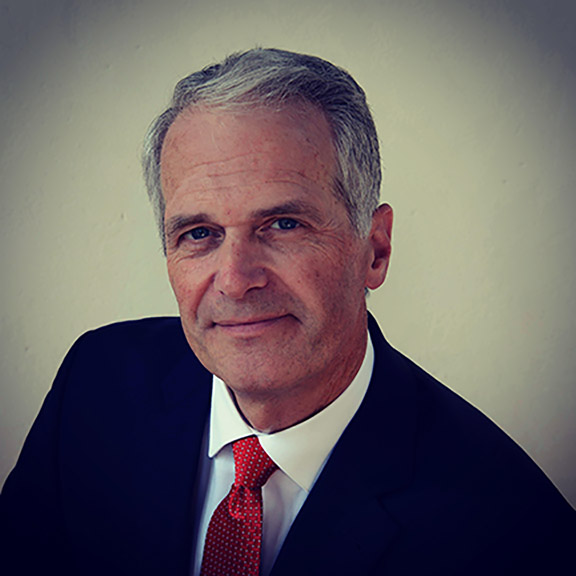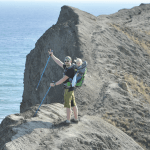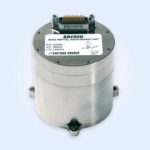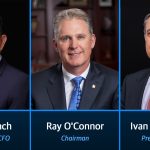 Kenneth Hudnut will receive the 2017 Ivan I. Mueller Award for Distinguished Service and Leadership in December. Photo courtesy of Kenneth Hudnut.
Kenneth Hudnut will receive the 2017 Ivan I. Mueller Award for Distinguished Service and Leadership in December. Photo courtesy of Kenneth Hudnut.Kenneth Hudnut, a contributing writer and former columnist for Inside GNSS, will receive the 2017 Ivan I. Mueller Award for Distinguished Service and Leadership at the 2017 American Geophysical Union Fall Meeting, to be held December 11-15 in New Orleans, La. The award acknowledges “major achievements in service to and/or leadership within the field of geodesy.”
Kenneth Hudnut, a contributing writer and former columnist for Inside GNSS, will receive the 2017 Ivan I. Mueller Award for Distinguished Service and Leadership at the 2017 American Geophysical Union Fall Meeting, to be held December 11-15 in New Orleans, La. The award acknowledges “major achievements in service to and/or leadership within the field of geodesy.”
Hudnut contributed an article titled “GNSS & Geohazards” as part of the “Thought Leadership Series”, and also was one of the authors for the technical article “Enhancing the Future of Civil GPS: Overview of the L1C Signal” published in Inside GNSS in 2007.
In a press release from the American Geophysical Union, colleagues discussed some of Hudnut’s achievements, and the honoree himself offered up a response.
“Ken Hudnut has been a leading model of scientific leadership and public service for almost three decades. His pioneering use of high-precision GPS techniques has contributed to the understanding of seismic fault structures and behavior. He played an important leadership role in the design of the modernized GPS L1C signal, which will improve the worldwide services provided by GPS to billions of users. Finally, his work with the U.S. Geological Survey continues to contribute to the management and reduction of risks arising from earthquakes and other national hazards, to the benefit of the public.”
– Dr. Scott Pace, Executive Secretary of the National Space Council
“Ken dedicated much of his research career to serving the geodetic community, often working at the highest levels behind the scenes, to ensure that researchers and society would benefit from geodesy. Through Ken’s vision and leadership, we learned that it was possible to install a continuous GPS network (SCIGN) dedicated to understanding tectonic processes and how airborne LiDAR could characterize tectonic deformation B4 and after an earthquake. Ken has become the bridge between the Earth science and emergency response communities, communicating hard science to decision makers and educating the public with ShakeOut earthquake drills. In 2016, 28 regions and more than 55 million people participated worldwide.
“Ken’s most significant contribution to science and society will be realized with the launch of the Block III GPS satellites. Ken co-led the design of the GPS L1C signal. The L1C signal will be stronger and more ionosphere resistant with improved accuracy in challenging environments and will enable low-power phase positioning on small devices. When the L1C begins broadcasting, the global community, including 6.1 billion smartphone users, will appreciate the improved GPS experience, but few will realize that our AGU Geodesy section colleague Ken Hudnut is the one to thank.”
– Dr. Gerald Bawden, NASA, USA
Hudnut’s Response:
“I thank the AGU Geodesy section, especially President Susan Owen and President-elect Meghan Miller, and particularly Gerald Bawden and others who supported this nomination, for the honor of being selected for this year’s Ivan I. Mueller Award. I never expected such recognition and am humbled, especially by Scott Pace’s kind words. I owe thanks to many more colleagues and friends than I can mention.
First, I thank my grandmother, Olive W. Smith, Ph.D. (biochemist), who encouraged my scientific curiosity. Later, Dick Stoiber taught me about volcanoes and Jim Savage showed me how to use geodesy to study them, and earthquake-related deformation. John Beavan, Kerry Sieh, Will Prescott, Nano Seeber, Tom Rockwell, and Mike Bevis guided and worked with me to explore new ways to mix geodesy, geology, GPS, and imagery to study the San Andreas Fault system. Earthquakes also inspired me; the significant earthquakes of 1987, 1992, 1994, 1999, and 2010 each helped identify how we needed to keep improving our observations before future big events. Over the years, with Hiroo Kanamori, Don Helmberger, Tom Heaton, and Joann Stock and their talented students and postdocs, we imagined how improved observations could answer questions concerning fault rupture and how it relates to ground motions, displacements, permanent deformation, and transient effects. Recently, pushing LiDAR’s limits with Ben Brooks and Craig Glennie has been exciting.
At the U.S. Geological Survey, leaders allowed me free rein to pursue collaborative projects. It is gratifying that Scott and Gerald mentioned notable examples of teamwork with SCIGN, B4 lidar, the GPS L1C signal, scenarios, and risk reduction. This award promotes teamwork that, in turn, fuels the innovative thinking needed to answer big scientific questions that remain.
Finally, I thank Dana Coyle and our children, Alexa, Olivia, and Brock, for their love and support.
– Kenneth Hudnut, U.S. Geological Survey, Pasadena, Calif.





